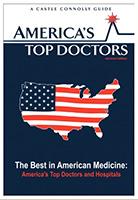Millions of individuals worldwide wear earrings and the vast majority of people have no complications from their pierced ears. There are, however, a number of situations where ear piercings require surgical attention. The most common example is the patient whose ear piercings, usually from years of wearing earrings, become elongated and unsightly. In some cases the the earrings tear completely through the bottom of the earlobe leaving a cleft in the lobe requiring repair.
More dramatic problems result from piercings of the upper portion of the ears. The earlobe contains no cartilage and the piercings are less likely to result in major problems. Piercings of the upper two-thirds of the ear must penetrate the cartilage. As with earlobe piercings, this is rarely problematic but when an infection does occur it can invade the cartilage causing permanent crumpling or distortion of the ear. The various complications described above, however, can be repaired. If you have experienced complications with your earrings, Dr. Charles Thorne can perform earlobe repair surgery in New York City.

The external ear, also called the auricle, is the visible portion of the human ear that is responsible for collecting sound and guiding it into the middle and inner ears. The auricle has another function in today’s society: to support earrings! The auricle is made up of a sandwich of skin and thin, bendable cartilage except in the earlobe where there is no cartilage. Ear piercings are commonly performed in all portions of the external ear. Over time, excessive stretching or weight from jewelry can cause the earlobe to sag until an elongated piercing or even a complete tear occurs. The elongated piercings can be unsightly. The complete tears cause an even more visible deformity and make it difficult to wear earrings at all.
Dr. Thorne uses a variety of surgical techniques to repair torn or stretched earlobes as well as deformities in the upper portion of the ear. In most cases, damaged earlobes can be surgically corrected with a simple outpatient procedure that takes about 20 to 30 minutes. Dr. Thorne will examine your ear and determine if your problem can be surgically repaired. You will be given the option for sedation, but most patients experience little discomfort when using only local anesthesia and this avoids the time and expense associated with a higher level operating room.
After local anesthesia is injected, the edges of the old piercing or the torn lobe are excised to create clean, fresh edges that will allow uncomplicated healing. The earlobe will then be sutured in layers using either a straight line or a zig-zag pattern, depending on the unique nature of each case.
"In most cases, torn earlobes can be surgically corrected with a simple outpatient procedure that takes about 20 to 30 minutes."
In order to allow enough time for the tissues to heal and develop enough strength to hold a new earring, you should wait several months before receiving another ear piercing. Dr. Thorne is happy to re-pierce your earlobe in a mutually agreeable location when an appropriate amount of time has passed. It is important to remember that your earlobe is susceptible to damage since it has already been surgically repaired. Use caution when wearing large, hooped earrings that could become caught on other objects, and avoid wearing heavy earrings that pull on the lobe.
In the case of more significant deformities related to ear piercing such as infections and distortion, Dr. Thorne may have to remove cartilage from behind your ear or even from your rib cage to reinforce the distorted part of the external ear.
If you are dissatisfied with the appearance of your ears, Dr. Thorne can probably help you. Contact our office today to schedule a consultation.

Dr. Thorne is the Editor-in-Chief and the author of several chapters in Grabb and Smith's PLASTIC SURGERY, 7th Edition.
Ear Construction Chapter in PDF







